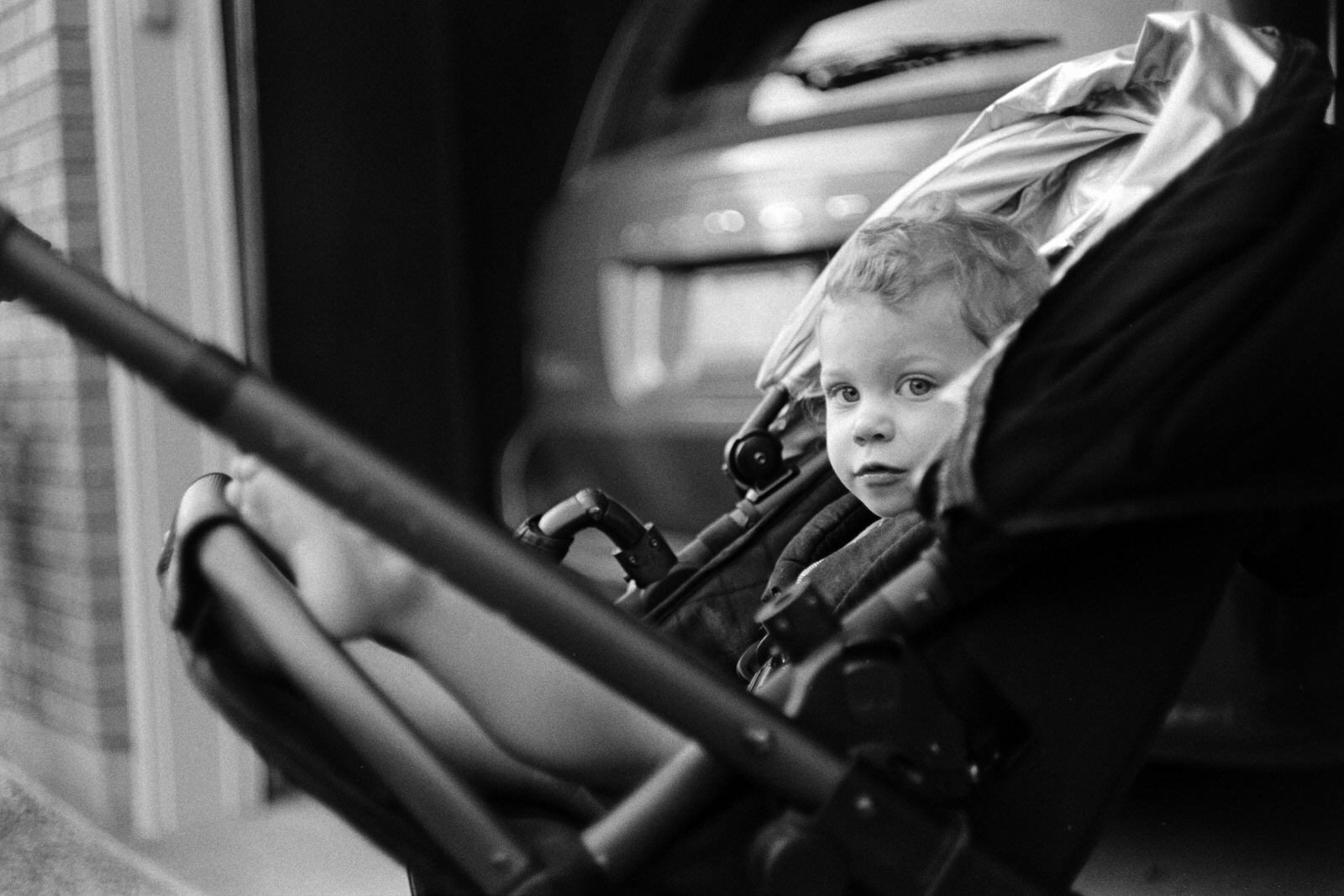Beta Spotlight: Bryan Caporicci Tests the Film Carrier MK1!
Bryan Caporicci is a professional photographer and CEO of Sprout Studio, and has recently begun using film in his photographic process. Based in Ontario, Bryan took the Film Carrier MK1 (beta) for a spin over the past few weeks, and we’re excited to share a short Q&A with you all!
Bryan Caporicci, photographer and CEO of Sprout Studio
1) How long have you been shooting film, and what is your favorite stock?
Bryan: “I've been a full-time professional wedding and portrait photographer for 13 years.Ten months ago, after being inspired by a class I took with Joel Meyerowitz, I shot my first roll of film - ever - and I've been hooked ever since!”
2) When it comes to film development, do you develop at home or use a lab?
Bryan: “I develop all of my own film at home. For me, shooting on film is as much about the experience and connection with my work as it is about the finished image. I love being involved in the making of an image, from capture to developing to scanning and printing.
Going through that experience and having my hands involved in the entire photographic process is incredibly fulfilling and rewarding.”
Captured on Kentmere 100 film with Leica M6 and Summicron 50mm collapsible, scanned using Film Carrier MK1 and Fuji X-T3 with 60mm macro lens
3) What's your current scanning method, and what methods have you used since you started shooting?
Bryan: “I started like everyone else, using a flatbed for scanning.
I initially shot mostly B&W film in 120 format. Flatbed scanning was a bit tedious and cumbersome, but since I was only scanning 12 images per roll and because converting B&W is more straightforward than color, the inconvenience was manageable.
As soon as I started shooting 35mm and experimenting with color film, that workflow all fell apart for me.
Now, I scan using my Fuji X-T3 and 60mm f/2.4 macro lens. I sold off my Epson flatbed and have a permanent copy stand and light table set up for my digitizing. It is a much quicker workflow, and I prefer the results over my flatbed scanner. Using Negative Lab Pro in conjunction made the workflow infinitely more enjoyable for me, too.
I started off using the Lomography Digitaliza to hold my negatives on my light table. It was better than flatbed scanning, but it was still an inconvenience to have to open and reload the negative holder with a new strip every 5-6 images.”
Captured on Kodak TMAX400 film with Leica M6 and Summicron 50mm collapsible, scanned using Film Carrier MK1 and Fuji X-T3 with 60mm macro lens.
Captured on Kodak TMAX400 film with Leica M6 and Summicron 50mm collapsible, scanned using Film Carrier MK1 and Fuji X-T3 with 60mm macro lens
Captured on Kentmere 400 film with Leica M4 and Summaron 35mm, scanned using Film Carrier MK1 and Fuji X-T3 with 60mm macro lens
4) How did the Film Carrier MK1 impact your scanning workflow?
Bryan: “Now that I've used the Film Carrier MK1, I couldn't imagine any other way. It is truly my "secret weapon" in film scanning - I can now get through an entire roll of 35mm film (36 exposures) in less than 5 minutes from start to finish. It makes scanning simple, quick, and enjoyable.
Now, I don't dread the digitization process. I can photograph unapologetically without hesitation and not dread the process of getting them onto my computer.”
5) Do you see a benefit to switching to the MK1 as your primary 35mm scanner?
Bryan: “Yes! I wouldn't have it any other way!”
Captured on Kodak 400TX film with Leica M6 and Summicron 50mm collapsible, scanned using Film Carrier MK1 and Fuji X-T3 with 60mm macro lens
6) Do you foresee yourself having an interest in our 120 full roll scanner?
Bryan: “I am almost to the point now that I don't want to shoot 120 until I can use a Film Carrier from Negative Supply. It makes the whole experience so much simpler and quicker, and I find myself shooting more 35mm these days since I know the digitization will be simple.”
“Now that I’ve used the Film Carrier MK1, I couldn’t imagine any other way. It is truly my “secret weapon” in film scanning - I can now get through an entire roll of 35mm film (36 exposures) in less than 5 minutes from start to finish. It makes scanning simple, quick, and enjoyable.”
Captured on Kodak Color Plus 200 film with Leica M6 and Summicron 35mm V3, scanned using Film Carrier MK1 and Fuji X-T3 with 60mm macro lens
Above: Bryan (via Sprout Studio YouTube channel) discusses his scanning process using a digital camera and the Film Carrier MK1. Check it out!
See Bryan’s work here: https://www.bcapphoto.com/
Check out Sprout Studio here: http://getsproutstudio.com/
Check out Bryan’s Instagram here: https://www.instagram.com/bcapphoto/







